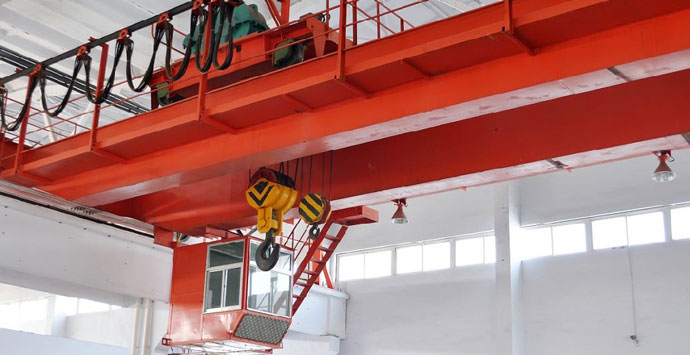Wie man einen Kran vom Schwingen verhindern?
2025-06-04
A swinging crane load isn’t just an annoyance – it’s a serious safety hazard and a major productivity killer. Uncontrolled sway can damage materials, compromise structural integrity, endanger personnel, and cause costly delays. The good news? Crane swing is highly manageable with the right techniques and tools. Here’s how to stop that load from dancing:

Understanding the Enemy: Why Loads Swing
Before tackling solutions, know the causes:
-
Sudden Movements: Jerky starts, stops, Heben, Senkung, or slewing (rotating the crane).
-
Wind: Gusts pushing against the load or boom.
-
Operator Error: Inexperience, rushing, or poor judgment.
-
Long Boom/Long Ropes: The longer the pendulum (boom + hoist ropes + laden), the more pronounced the swing.
-
Uneven Grounding: Setting a load down unevenly can induce swing when lifting again.

Key Strategies to Stop Crane Load Swing:
-
Master the “Soft Start” and “Soft Stop”: This is operator technique 101.
- Lifting/Lowering: Accelerate and decelerate the hoist gradually. Imagine easing your car away from a stoplight, not stomping on the gas. The same applies when stopping the descent or ascent.
- Slewing (Swinging the Crane): Begin rotation slowly and end it smoothly. Avoid whipping the boom around. Plan your swing path to minimize unnecessary movement. Slow down before reaching the target position, allowing the load to settle.
-
Perfect the “Soft Load” and “Soft Ground”:
- Lifting Off: Ensure slings are taut but not jerking the load. Lift slowly and steadily until the load is completely clear of the ground or obstructions.
- Setting Down: Lower the load gently and completely slacken the slings before unhooking. Don’t “drop” the last few inches. Setting down one corner first often induces swing.
-
Use a Tagline (Load Line): This is one of the simplest and most effective manual controls.
- A worker (tagline operator), positioned safely outside the potential drop zone and not under the load, uses a rope attached to the load.
- They apply gentle, controlled tension to guide the load, counteract swing, and position it precisely during final placement.
- Crucial: Clear communication (hand signals or radios) between the crane operator and tagline operator is vital. The tagline operator must be trained and aware of pinch points.
-
Leverage Technology: Anti-Sway Systems:
- Pendant Controlled Systems: Some cranes allow operators to manually engage an anti-sway function via a pendant control, which calculates and applies counter-movements.
- Fully Automated Anti-Sway Systems: These sophisticated systems use sensors (like Inertial Measurement Units – IMUs) on the Kranhaken und Block or load.
- They continuously measure load swing (angle and rate).
- The crane’s control system automatically calculates and executes precise boom and hoist movements to counteract the swing, effectively damping it out.
- Vorteile: Significantly reduces operator workload, improves precision, enhances safety, and speeds up operations, especially with long booms or in windy conditions.
-
Respect the Wind:
- Monitor Conditions: Constantly be aware of wind speed and direction. Know the crane’s rated wind limits and stop operations if they are exceeded.
- Wind Management: When lifting large, light, or sail-like loads (Z.B., panels, trusses), expect significant wind effect. Use taglines diligently. Position the load so wind pushes it towards its destination when possible during the swing. Lift loads closer to the ground where wind speeds are often lower.
-
Operator Skill and Judgment: The most critical factor.
- Ausbildung: Comprehensive, ongoing training on load dynamics and control techniques is non-negotiable.
- Planning: Before lifting, plan the entire path. Identify obstacles, clearance points, and the optimal swing route. Anticipate how the load will behave.
- Patience: Rushing causes jerky movements. Glatt, deliberate actions are faster in the long run because they prevent swing and re-positioning.
- Kommunikation: Maintain clear, constant communication with signal persons, riggers, and ground personnel.
Stopping crane swing isn’t about brute force; it’s about finesse, anticipation, and using the right tools. By mastering smooth operating techniques, consistently employing taglines, utilizing available anti-sway technology, respecting environmental factors like wind, and prioritizing skilled operation, you transform a potentially dangerous pendulum into a precisely controlled instrument.
Implementing these strategies consistently dramatically improves job site safety, protects valuable materials and structures, boosts productivity, and ensures your crane operations run smoothly and efficiently. Erinnern: a still load is a safe and productive load.




Neueste Kommentare